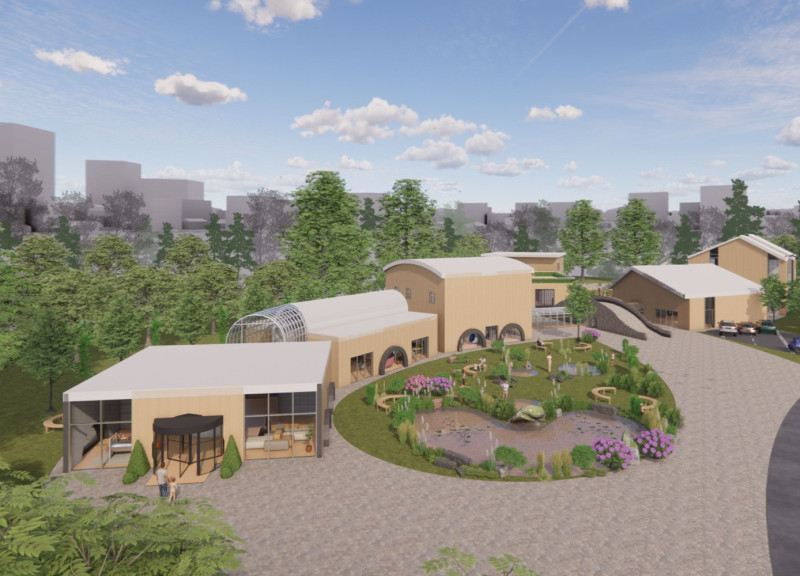5 key facts about this project
At the heart of the design lies an open floor plan, which fosters flexibility and encourages a dynamic use of space. This layout is especially advantageous in accommodating diverse gatherings, from formal events to informal meetings. The extensive use of large glass panels facilitates a strong connection between the indoor and outdoor environments, allowing natural light to flood the interiors while offering views that further enhance the user experience. The building’s orientation is carefully considered to maximize sunlight exposure during the day, minimizing the need for artificial lighting and making efficient use of energy resources.
The project's materiality is a key aspect of its identity. Concrete is employed not only for its robust structural capabilities but also provides a minimalist aesthetic that aligns with modern design trends. The surfaces feature varied textures, achieved through innovative formwork techniques that elevate the visual interest of the exterior. Glass plays a dual role; it not only provides transparency and openness but also incorporates advanced energy-efficient technology, ensuring that the building supports its users without compromising environmental integrity. Steel framing contributes to the building's stability while allowing for expansive open spaces free from intrusive structural supports.
Wood is thoughtfully integrated into the design as a means to introduce warmth and a tactile quality to the otherwise industrial materials. Used primarily in interior finishes, sustainable timber adds an organic feel that encourages a sense of comfort and belonging among users. The inclusion of a green roof system furthers the project’s sustainability goals by providing insulation, managing stormwater, and promoting biodiversity within the urban landscape. This aspect of the design reflects a forward-thinking approach to urban planning, considering not only human occupants but also the surrounding ecosystem.
Unique design approaches are evident throughout the project. The concept of biophilic design is embraced, illustrating how architecture can enhance well-being by incorporating natural elements and promoting an environment that nurtures community interaction. Shared spaces, such as gardens and communal lounges, are essential components, creating opportunities for users to engage with one another and build relationships, reinforcing the project's role as a community gathering point.
The unprecedented emphasis on local culture influences the design's overall aesthetic, creating a dialogue between contemporary architectural language and traditional values. This respectful nod to heritage fosters a sense of pride among the community, making the structure more than just a building; it becomes a symbol of collective identity and continuity.
The geographical context of the project further enriches its significance. The design thoughtfully engages with local climatic conditions, optimizing the building’s performance within its environment. This responsiveness ensures the architecture not only serves its intended purpose but also enhances the surrounding landscape aesthetically and functionally.
For those interested in exploring the project further, a closer examination of the architectural plans, sections, and designs will provide deeper insights into the innovative ideas that shaped this work. Understanding these elements can enrich appreciation for the thoughtful consideration and planning involved in creating such a multifaceted architectural endeavor. We invite everyone to delve into the project presentation to witness firsthand the integration of functionality, beauty, and sustainability evident in every detail.























